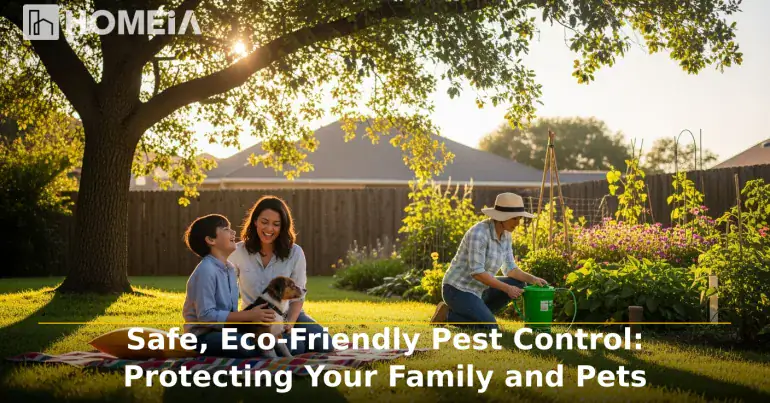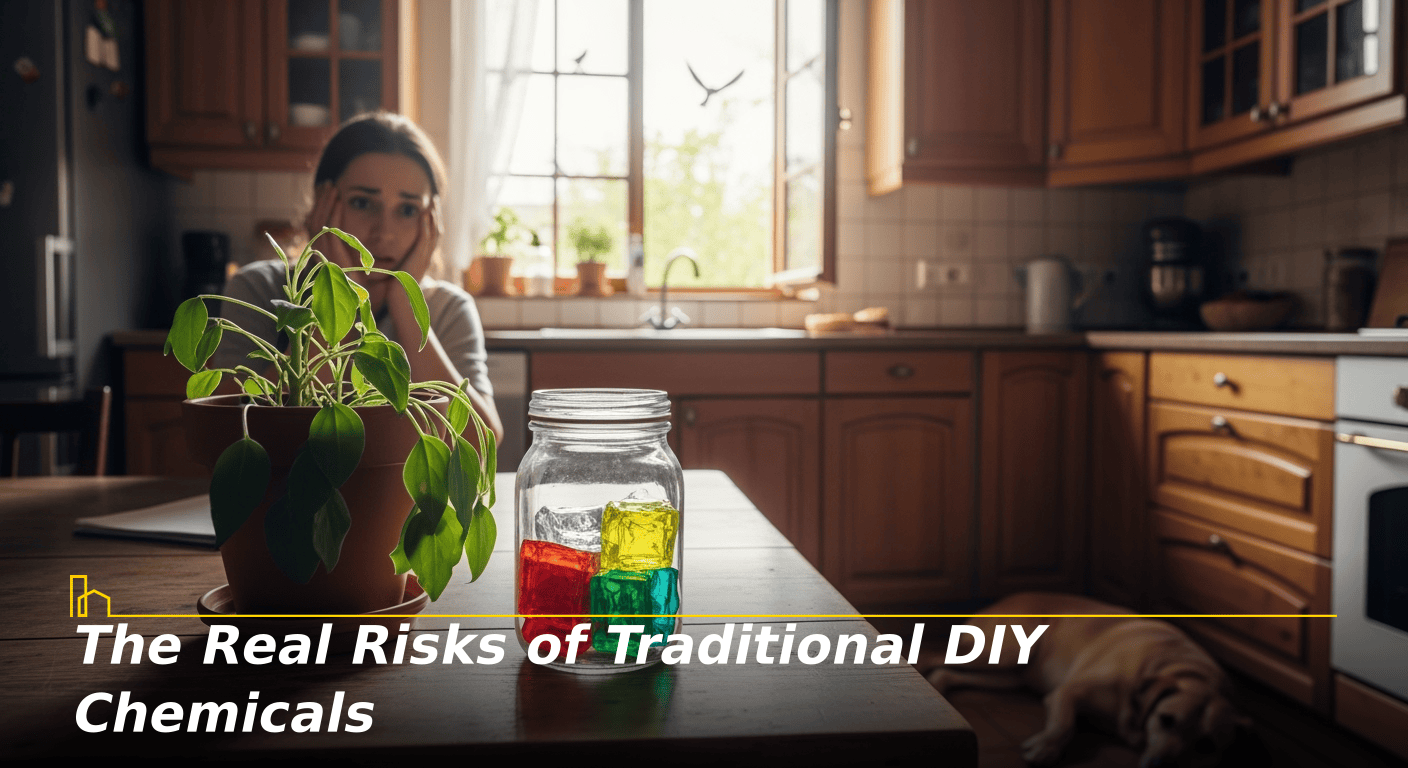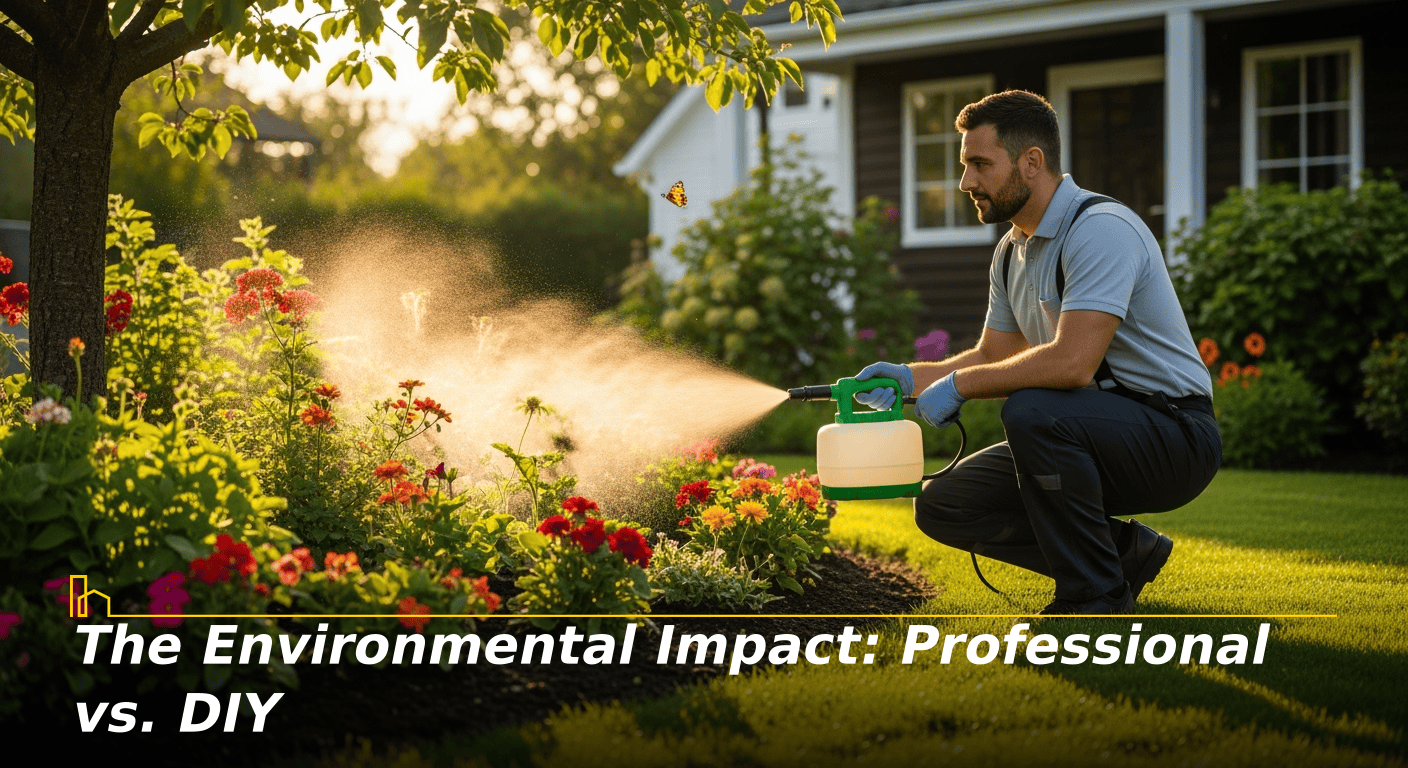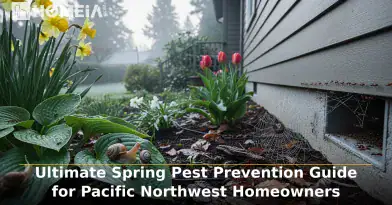Safe, Eco-Friendly Pest Control: Protecting Your Family and Pets
- Local Editor:Local Editor: The HOMEiA Team
Published: Oct 17, 2025
- Category: Home Maintenance

Today’s homeowners are more conscious than ever about the products they use in and around their homes, especially when it comes to protecting their children and pets. The days of spraying harsh, smelly chemicals throughout the house are fading. Modern pest control has evolved, focusing on methods that are not only effective, but are also safe for families and the environment. This article will explore the world of eco-friendly pest control. We will demystify the science behind these safer treatments and explain how a strategic approach, known as Integrated Pest Management (IPM), can solve your pest problems without compromising a home’s safety. You can have a pest-free home and the peace of mind that comes with using responsible solutions.
Table of Contents:
- 1. What Does “Eco-Friendly” and “Family-Safe” Really Mean?
- 2. Understanding IPM: The Smart, Strategic Approach
- 3. The Power of Botanical Pesticides: Nature’s Solutions
- 4. The Real Risks of Traditional DIY Chemicals
- 5. Pest Control Tailored for Pet Owners
- 6. The Environmental Impact: Professional vs. DIY
- Frequently Asked Questions: Eco-Friendly Pest Control
1. What Does “Eco-Friendly” and “Family-Safe” Really Mean?

When discussing eco-friendly pest control, we’re referring to methods and products that have a minimal impact on the environment and non-target organisms, like people and pets. These solutions are often derived from botanical sources or use mechanisms that specifically target the enemy.
For example, Some pest control providers use treatments that, once dry, are considered “safer than toothpaste” for your family. This doesn’t mean they are weak; it means they are designed to be highly toxic to pests but possess minimal toxicity for mammals. It breaks down quickly in the environment, reducing soil and water contamination. Doing so prioritizes precision and prevention over blanket chemical application, aligning with a healthier, more sustainable lifestyle for any household.
Ultimate Spring Pest Prevention Guide for Pacific Northwest Homeowners
Spring in the Pacific Northwest is a season of renewal — with rain turning the landscape lush and flowers bursting into bloom. But that same moisture and warmth also awaken ants, spiders, rodents, and slugs searching for food, water, and shelter. Homes that offer easy access can quickly attract these pests…
2. Understanding IPM: The Smart, Strategic Approach

Integrated Pest Management (IPM) is a holistic, common-sense strategy that forms the backbone of modern, eco-friendly pest control. Instead of relying solely on pesticides, IPM champions long-term prevention and uses a multi-step process. First, we inspect your home to identify the specific pest and understand why it’s there.
Next, we focus on prevention by sealing entry points and removing attractants like food and water sources. Then, we use control methods, starting with low-risk options, such as traps or biological controls, before considering targeted pesticides. Doing so is not only safer but often more effective and cost-efficient in the long run because it addresses the root cause of the problem, not only the symptoms.
3. The Power of Botanical Pesticides: Nature’s Solutions

A key tool in the eco-friendly arsenal is the use of botanical pesticides. These are derived from plants that have natural pest-repelling or killing properties. A common example is pyrethrin, which comes from chrysanthemum flowers. It’s highly effective against various insects but breaks down rapidly when exposed to sunlight and air, leaving little to no residue.
Another is neem oil, pressed from the seeds of the neem tree. These act as repellents disrupting the growth and reproduction of insects. Natural products provide the power needed to eliminate infestations while offering a safer profile than older, synthetic chemicals to responsibly protect our homes.
Smart Pest Control: How Technology is Revolutionizing Home Pest Management
Imagine a pest control system that detects problems before you even see a single bug. This isn’t science fiction — it’s the reality of smart pest control. With IoT sensors, AI-powered monitoring, and precision tools, pest management is now smarter, more efficient…
4. The Real Risks of Traditional DIY Chemicals

Typically, homeowners reach for off-the-shelf pesticides at the local hardware store, not realizing their risks. They often contain broad-spectrum insecticides that can linger on surfaces for weeks. If inhaled or touched, it can be hazardous.
Misapplication is also common, failing to even address the problem.. In contrast, professional eco-friendly services apply products with precision in areas that pests frequent but your family does not, significantly reducing any risk of contact and ensuring the treatment is both effective and safe.
5. Pest Control Tailored for Pet Owners

If you have pets, their safety is a top priority. Dogs and cats have faster metabolisms and groom themselves, making them susceptible to pesticide residues on floors, lawns, or their own fur. When hiring a professional service like Axiom, it’s crucial to inform them about your pets. We can use pet-safe treatment strategies, including placing baits in secure, tamper-resistant stations and using products that have a rapid breakdown time.
After treatment, we provide clear instructions, such as keeping pets off treated surfaces until they are dry. This proactive communication ensures your furry family members are protected while the home becomes pest-free. For more tips on creating a safe home environment, you can explore our guide on childproofing and pet-proofing your home.
Complete Home Pest Inspection Checklist: What Professional Inspectors Look For
Finding pests at home can be stressful, but many infestations can be prevented with regular inspections. You don’t need to be an expert — just know what to look for. Spotting early signs of termites, rodents, or ants can save you from major damage, and combining DIY checks with…
6. The Environmental Impact: Professional vs. DIY

Choosing professional eco-friendly services over conventional DIY methods has a positive impact on the local environment. Professionals are trained to identify the specific pest and use a targeted approach, meaning less overall pesticides are used. We know how to apply products to minimize runoff into waterways and avoid harming beneficial insects like bees and butterflies.
DIY users, with less training, often over-apply products, leading to greater environmental contamination. Furthermore, a professional IPM program focuses on making your property inherently less attractive to pests, reducing the need for any chemical interventions over time. This sustainable approach protects your local ecosystem while solving your immediate pest issue.
Conclusion: Making the Smart Choice for Your Home
Protecting your home from pests shouldn’t mean compromising the health of your family, pets, or the planet. By understanding and choosing eco-friendly pest control and the IPM approach, you are investing in a safer, more sustainable solution.
Your California Tenant Rights: A 2025 Guide to a Safe, Pest-Free Home
California renters have the “right to habitability,” meaning your landlord must keep your home safe, clean, and pest-free. Cities like San Francisco and Los Angeles even run proactive housing inspection programs. Welcome!…
Frequently Asked Questions: Eco-Friendly Pest Control
1. How long do we need to stay out of the house after an eco-friendly treatment?
With our family-safe treatments, the required waiting period is typically brief. Once applied products are dry—which usually takes 1-2 hours—it is safe for your family and pets to re-enter the treated area. We will always provide specific, clear instructions after your treatment.
2. Are these natural products as effective as traditional chemicals?
Yes, when applied correctly by a professional. Eco-friendly products are highly effective at eliminating pests. The key difference is in the strategy: instead of a broad-spectrum chemical attack, we use Integrated Pest Management (IPM). It means we target the pest’s specific biology and habits, often leading to a more thorough and long-lasting solution.
3. What should I do with my pet’s food and water bowls during treatment?
This is an important safety step, even with our safer products.
- Before treatment, please remove all pet bowls, toys, and bedding from the areas to be treated.
- Cover fish tanks and turn off the air pump to prevent any airborne particles from entering.
- We will focus application in areas pets don’t access, like cracks, crevices, and under appliances.
4. Can you treat the yard where my kids and dogs play?
Absolutely. We offer eco-friendly outdoor treatments that target pests like fleas and ticks while being safe for your family and the environment. These treatments use products that break down quickly while having low toxicity to mammals. We will advise you on a safe re-entry time.
5. Do I need to clean more thoroughly after a treatment?
Not necessarily. For the first week, we recommend avoiding a deep clean of the areas where we applied products to allow the treatment to work fully. Afterwards, your normal cleaning routine is perfect. Avoid using abrasive cleaners on treated surfaces for the first few weeks.
Table of Contents:
- 1. What Does “Eco-Friendly” and “Family-Safe” Really Mean?
- 2. Understanding IPM: The Smart, Strategic Approach
- 3. The Power of Botanical Pesticides: Nature’s Solutions
- 4. The Real Risks of Traditional DIY Chemicals
- 5. Pest Control Tailored for Pet Owners
- 6. The Environmental Impact: Professional vs. DIY
- Frequently Asked Questions: Eco-Friendly Pest Control
HOMEiA is a city guide site where visitors can find detailed information about communities of interest. HOMEiA’s City Guides, created in partnership with local writers and editors, are curated lists of the best, safest, and most affordable places to live. The guides feature the HOMEiA Score, a proprietary index that rates communities on such factors as housing costs, education, employment, etc.
HOMEiA.com aims to be the premier site for people planning to relocate, providing them with insightful content and connecting them with skilled real estate professionals.
We also empower real estate professionals to establish or strengthen their web presence by highlighting their experience, knowledge and achievements. If you’re selected to join our list of certified real estate professionals, you will distinguish yourself from your peers — and earn HOMEiA’s support.
If you believe in HOMEiA’s mission, please share our website with others.
Table of Contents:
- 1. What Does “Eco-Friendly” and “Family-Safe” Really Mean?
- 2. Understanding IPM: The Smart, Strategic Approach
- 3. The Power of Botanical Pesticides: Nature’s Solutions
- 4. The Real Risks of Traditional DIY Chemicals
- 5. Pest Control Tailored for Pet Owners
- 6. The Environmental Impact: Professional vs. DIY
- Frequently Asked Questions: Eco-Friendly Pest Control





































































































































